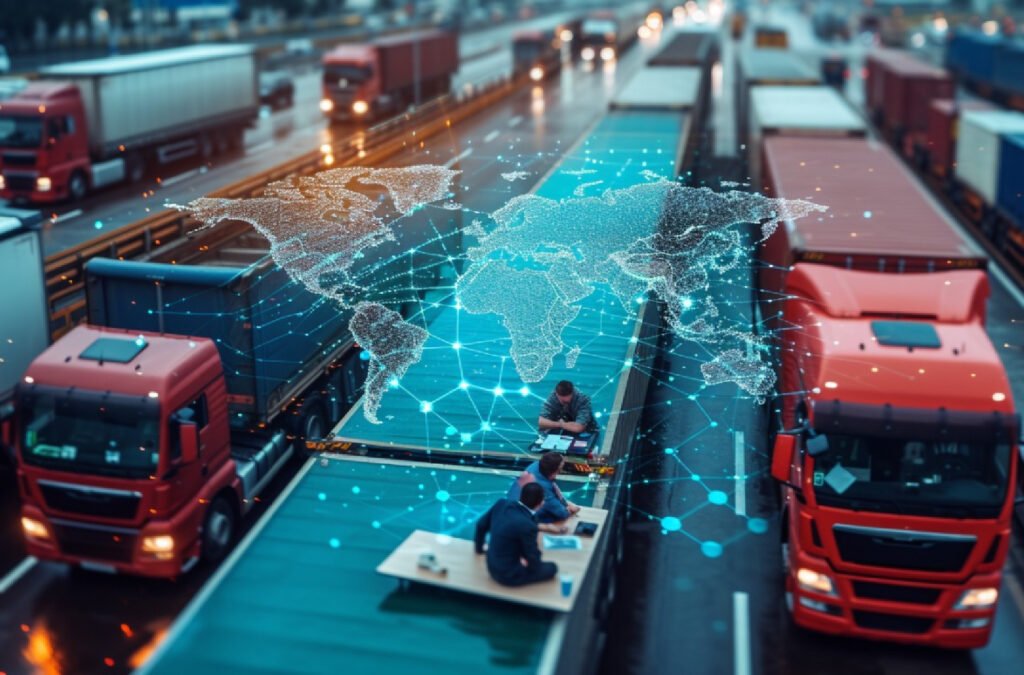Digital Supply Chains: Real Stories from the Frontlines of Innovation

In today's fast-paced, interconnected world, supply chains have evolved from traditional linear systems into complex, dynamic networks powered by digital transformation. With advances in technology like artificial intelligence (AI), blockchain, the Internet of Things (IoT), and advanced analytics, businesses are reimagining their supply chain processes to stay competitive, enhance efficiency, and increase resilience. But what does digital transformation in supply chains really look like? Let’s explore some real stories from the frontlines of innovation to understand how companies are leveraging digital tools to revolutionize their operations.
1. Walmart: Harnessing Blockchain for Greater Transparency
One of the most impressive examples of digital supply chain innovation comes from retail giant Walmart. Traditionally, managing the flow of goods across its vast global supply chain was a daunting task, especially in ensuring product quality and safety. To address this, Walmart turned to blockchain technology.
Working with IBM, Walmart developed a blockchain-based system that tracks the entire journey of food products from farm to store. By scanning product QR codes, Walmart can now trace the origins of an item in seconds, whereas previously, this process could take days. Not only has this improved efficiency, but it has also enhanced food safety by allowing the company to quickly isolate any contaminated products during an outbreak, protecting consumers and mitigating financial risks.
The success of this blockchain initiative has inspired many other companies to explore how similar technologies can improve transparency and traceability across industries such as pharmaceuticals, electronics, and fashion.
2. DHL: Predictive Analytics for Proactive Decision-Making
In the logistics sector, DHL has been leading the way in using predictive analytics to transform its supply chain operations. With millions of shipments moving globally every day, even minor disruptions can have significant consequences. To minimize the impact of potential issues, DHL developed a predictive analytics platform that harnesses historical data, external factors (like weather, traffic, and geopolitical events), and machine learning to forecast disruptions in the supply chain.
This data-driven approach allows DHL to proactively adjust shipping routes, warehouse strategies, and inventory management in real-time, reducing delays and improving customer satisfaction. In fact, the company reports that this predictive system has led to a 15% improvement in delivery time accuracy and a significant reduction in operational costs. DHL’s use of predictive analytics is a prime example of how leveraging data can create a smarter, more responsive supply chain.
3. Unilever: Sustainability Through Digital Twins
Unilever, one of the world's largest consumer goods companies, has embraced digital twin technology to achieve its ambitious sustainability goals. Digital twins are virtual replicas of physical assets, systems, or processes that can simulate and optimize supply chain performance in real-time.
In Unilever’s case, they’ve developed digital twins of their factories and supply chains to optimize energy use, reduce waste, and improve overall efficiency. By continuously analyzing data from sensors installed in their facilities, Unilever can make informed decisions on energy consumption, reduce emissions, and minimize resource usage. This not only helps the company meet its sustainability targets but also delivers cost savings across its operations.
For example, Unilever has used digital twins to reduce water consumption by 40% in its factories. The ability to simulate production processes and make real-time adjustments has allowed Unilever to optimize its environmental impact while maintaining the quality and quantity of its output.
4. Maersk: IoT for End-to-End Visibility
Global shipping giant Maersk has turned to the Internet of Things (IoT) to gain end-to-end visibility across its shipping operations. With thousands of ships and millions of containers traversing the globe, maintaining real-time visibility of cargo has always been a challenge.
By integrating IoT sensors into containers, Maersk can now track the precise location, temperature, humidity, and movement of goods in real-time. This data is fed into a centralized platform where customers can monitor their shipments, ensuring that sensitive goods like pharmaceuticals and perishable items are transported under optimal conditions.
The introduction of IoT sensors has reduced cargo loss, improved delivery times, and enhanced customer trust. Additionally, Maersk has leveraged this data to optimize routes and reduce fuel consumption, further strengthening its commitment to sustainability.
The Future is Digital
These stories from Walmart, DHL, Unilever, and Maersk are just a few examples of how digital transformation is reshaping the world of supply chains. From blockchain-driven transparency to predictive analytics, digital twins, and IoT, companies across industries are reaping the benefits of supply chain innovation. These technologies not only improve efficiency and cost-effectiveness but also enhance sustainability and customer satisfaction.
As more companies embrace digitalization, the supply chain of the future will become smarter, more connected, and more resilient. For businesses looking to stay competitive, adopting these technologies is no longer an option but a necessity.
Join us at the Supply Chain Digitalization Conference to hear more about these cutting-edge innovations from industry leaders and learn how you can apply these strategies to your own supply chain. Engage with thought leaders, explore real-world use cases, and be part of the digital revolution in supply chain management!
